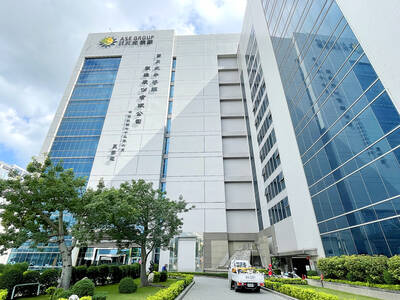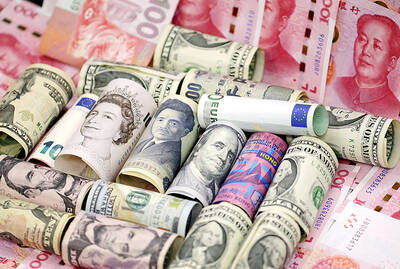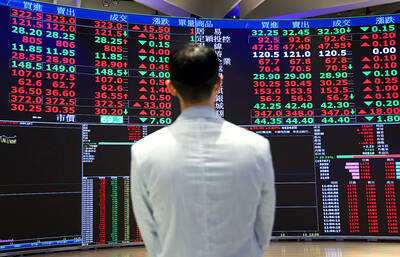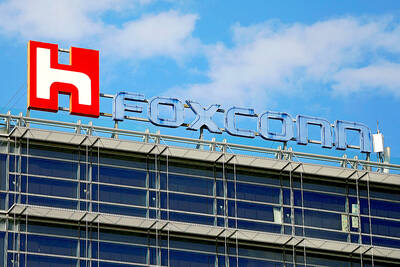The nation’s Civil Aeronautics Administration (CAA) yesterday said it would take more time for the nation to link Taipei Songshan Airport with airports in China and Japan, but that the goal was to create more business opportunities for local firms by building one of the busiest air hubs in the Asia-Pacific region.
President Ma Ying-jeou’s (馬英九) vision of connecting the Taipei airport with airports in Shanghai, Tokyo and Seoul has a missing link because direct flight services between Songshan and South Korea’s Gimpo International Airport will not materialize until next year.
The vision, titled “A Golden Aviation Circle in Northeast Asia,” (東北亞黃金航圈) was one of the promises Ma made during his 2008 presidential campaign.
Insufficient airport capacity was the major problem, CAA officials told officials from the Ministry of Transportation and Communications (MOTC) yesterday.
“Songshan Airport has limited capacity,” CAA Director-General Yin Chen-pong (尹承篷) said. “It can accommodate more international flights after the airport renovation project is complete in October next year.”
INCHEON
“Incheon International Airport [the largest international airport in South Korea] still has room to accommodate more international flights,” Yin said. “It is unlikely that they [South Korea] will open another hub for international flights.”
Besides, neither Taiwan nor South Korea are eager to talk about that possibility at the moment, Ying said.
Gimpo now has direct flight services with Hongqiao and Haneda. Taiwan and South Korea had a chance to meet last year, but the meeting was canceled for reasons unknown, said Betty Cheng (程嘉莉), CAA’s planning division director.
All-cargo
Cheng said that Taiwan has limited the number of passenger flights from South Korea and banned all-cargo flight services. Therefore, several key issues are very likely to be brought up when both sides negotiate on direct flight services, she said.
“We estimate that lifting the ban on all-cargo flight services and even granting South Korean cargo flight operators the right to fly to a third country after landing at our airports will be hot button issues,” Cheng said. “On the other hand, we do not need South Korea’s agreement to fly the extension flight to a third country.”
Direct flight services between Songshan and Shanghai Hongqiao were launched on June 14. China Airlines (CAL, 華航), EVA Air (長榮) and TransAsia Airways (復興) jointly offer 14 direct flights per week. As of Sunday last week, the average passenger occupancy rate for Songshan-Hongqiao flights was 84.2 percent.
Direct flight services between Songshan and Japan’s Haneda Airport are scheduled to be launched on Oct. 31 after Haneda inaugurates its fourth runway.
CAL, EVA, Japan Airlines (JAL) and All Nippon Airways (ANA) will initially provide a total of eight flights per day.

EXPANSION: The investment came as ASE in July told investors it would accelerate capacity growth to mitigate supply issues, and would boost spending by 16 percent ASE Technology Holding Co (ASE, 日月光投控), the world’s biggest chip assembly and testing service provider, yesterday said it is investing NT$17.6 billion (US$578.6 million) to build a new advanced chip packaging facility in Kaohsiung to cope with fast-growing demand from artificial intelligence (AI), high-performance-computing (HPC) and automotive applications. The new fab, called K18B, is to commence operation in the first quarter of 2028, offering chip-on-wafer-on-substrate (CoWoS) chip packaging and final testing services, ASE said in a statement. The fab is to create 2,000 new jobs upon its completion, ASE said. A wide spectrum of system-level chip packaging technologies would be available at

Taiwan’s foreign exchange reserves hit a record high at the end of last month, surpassing the US$600 billion mark for the first time, the central bank said yesterday. Last month, the country’s foreign exchange reserves rose US$5.51 billion from a month earlier to reach US$602.94 billion due to an increase in returns from the central bank’s portfolio management, the movement of other foreign currencies in the portfolio against the US dollar and the bank’s efforts to smooth the volatility of the New Taiwan dollar. Department of Foreign Exchange Director-General Eugene Tsai (蔡炯民)said a rate cut cycle launched by the US Federal Reserve

HEAVYWEIGHT: The TAIEX ended up 382.67 points, with about 280 of those points contributed by TSMC shares alone, which rose 2.56 percent to close at NT$1,400 Shares in Taiwan broke records at the end of yesterday’s session after contract chipmaker Taiwan Semiconductor Manufacturing Co (TSMC, 台積電) hit a fresh closing-high amid enthusiasm toward artificial intelligence (AI) development, dealers said. The TAIEX ended up 382.67 points, or 1.45 percent, at the day’s high of 26,761.06. Turnover totaled NT$463.09 billion (US$15.22 billion). “The local main board has repeatedly hit new closing highs in the past few sessions as investors continued to embrace high hopes about AI applications, taking cues from a strong showing in shares of US-based AI chip designer Nvidia Corp,” Hua Nan Securities Co (華南永昌證券) analyst Kevin Su

Nvidia Corp’s major server production partner Hon Hai Precision Industry Co (鴻海精密) reported 10.99 percent year-on-year growth in quarterly sales, signaling healthy demand for artificial intelligence (AI) infrastructure. Revenue totaled NT$2.06 trillion (US$67.72 billion) in the last quarter, in line with analysts’ projections, a company statement said. On a quarterly basis, revenue was up 14.47 percent. Hon Hai’s businesses cover four primary product segments: cloud and networking, smart consumer electronics, computing, and components and other products. Last quarter, “cloud and networking products delivered strong growth, components and other products demonstrated significant growth, while smart consumer electronics and computing products slightly declined,” compared with the